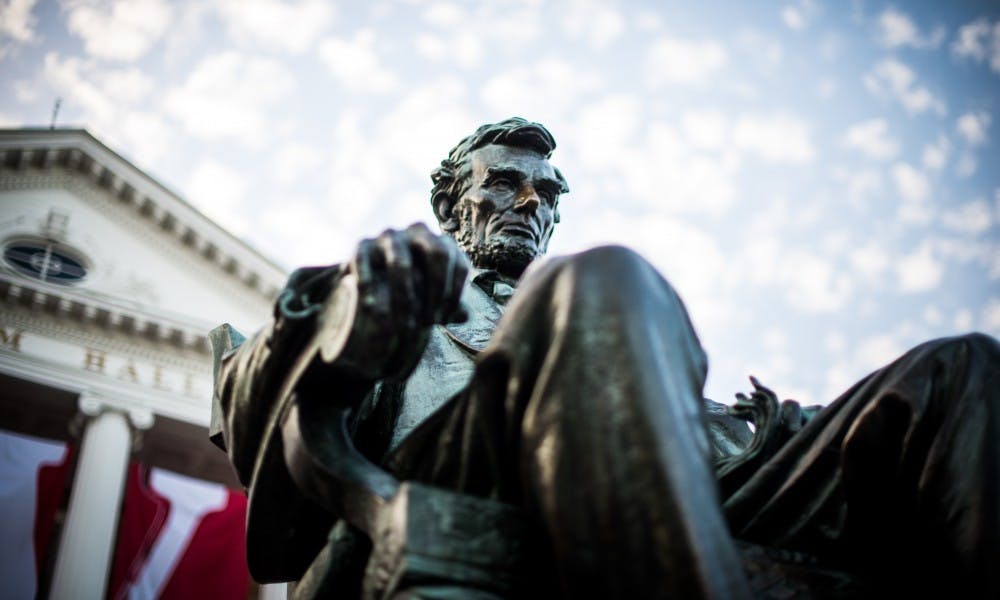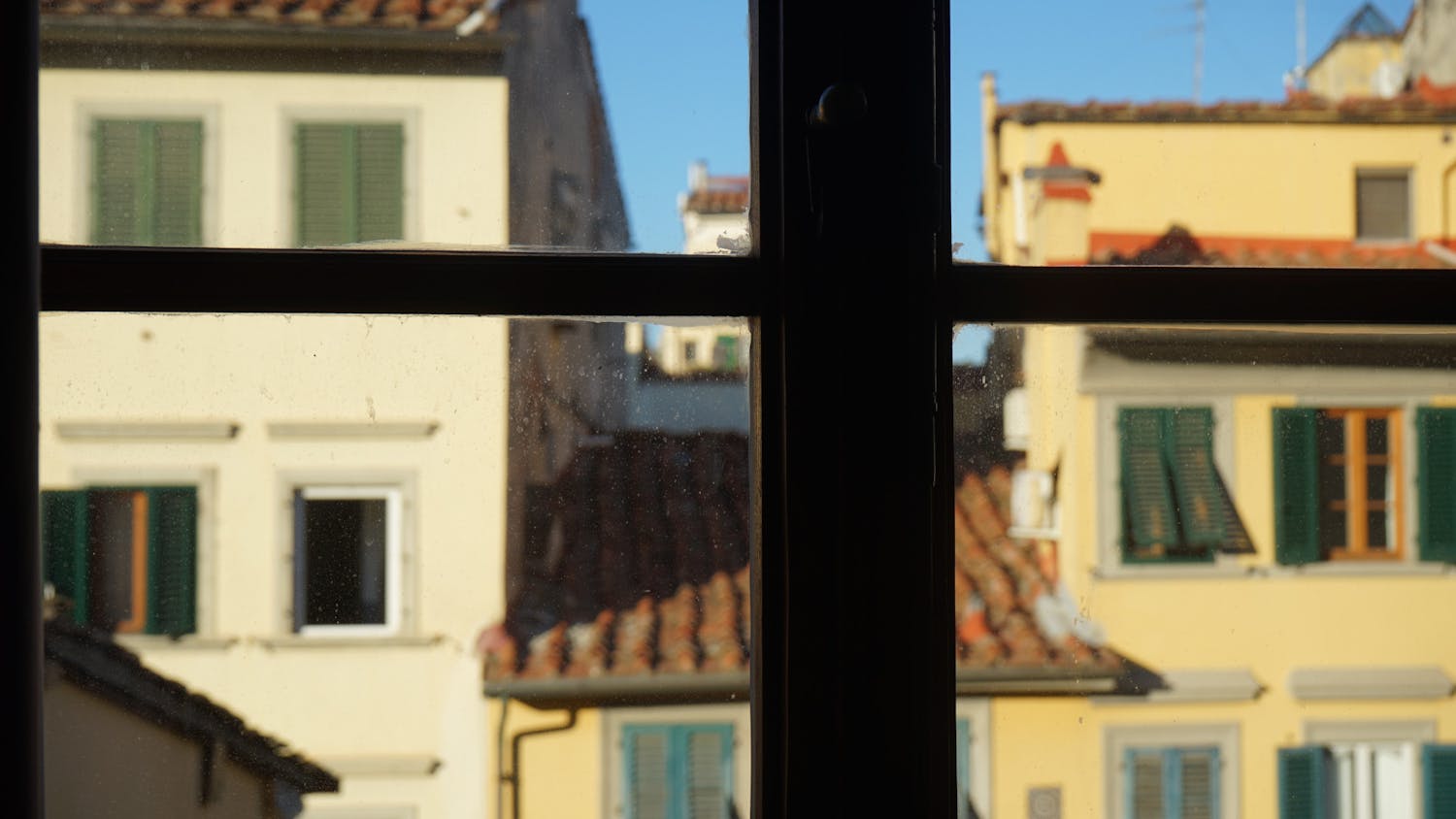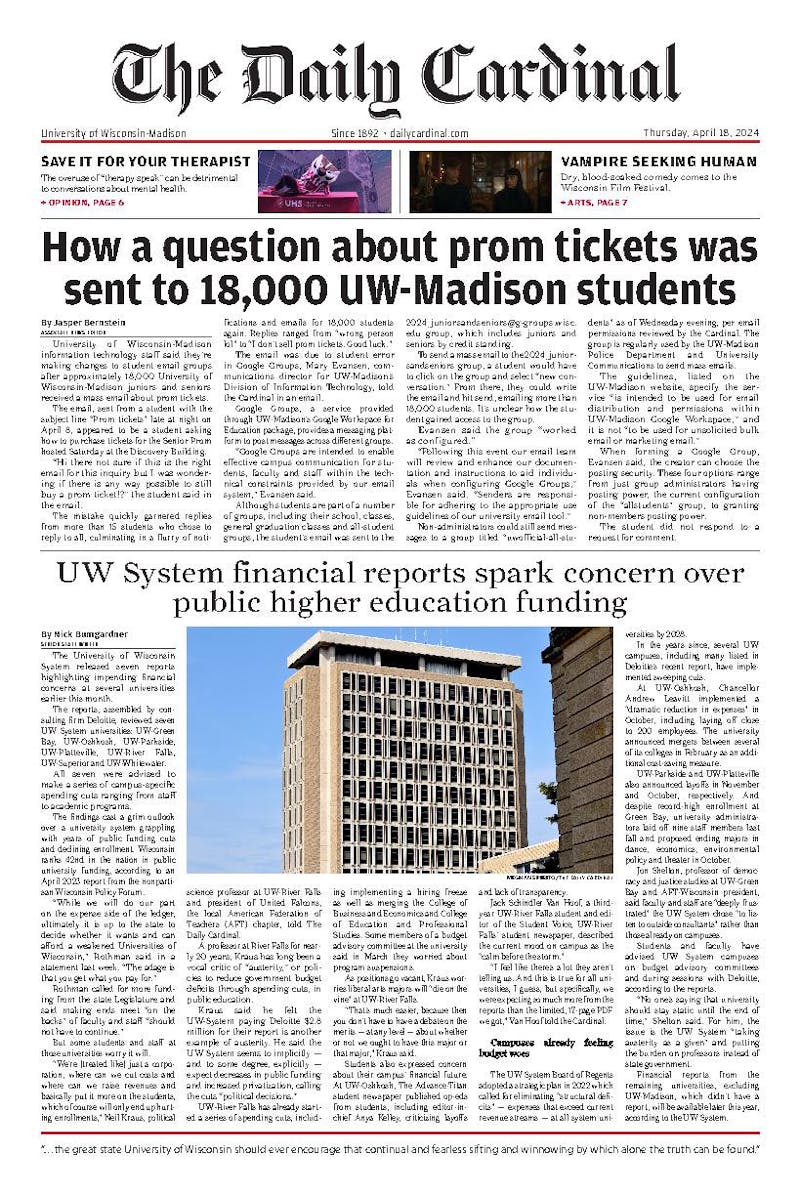B
A full-body bust memorializing Abraham Lincoln has sat on Bascom Hill, in front of the chancellor’s office, for more than a century.
Last fall, the Associated Students of Madison joined with indigenous student organization Wunk Sheek to demand “a plaque next to Abraham Lincoln, specifying the former President’s role in the execution of 38 Dakota Native Americans, the largest mass execution in US History, and his role in passing land grants, depriving Native Americans of their ancestral lands.”
The proposal is a simple, inexpensive way to respond to students’ concerns and inform the UW-Madison community.
However, two weeks ago, Chancellor Rebecca Blank told The Daily Cardinal that UW-Madison will not be meeting this demand.
This is a failure.
The university has forgone the opportunity to respond to the qualms of native students and confront the community with
Blank said she personally believes acknowledging the bright and dark spots of the past is necessary.
“We always love to acknowledge [our good history],” Blank said. “It’s important to acknowledge some of the difficult
We agree. But will all sides be told?
Lincoln’s history is nuanced. The Morrill Land-Grants Act, signed into law by P
Less than six months after passing the legislation, the president reviewed death sentences for war crimes for 303 men from the Dakota Uprising and confirmed 38 of them while commuting the rest.
The legitimacy of their trials is questionable.
Treaty violations by the federal government left the Dakota people hungry and impoverished, leading to a violent outbreak against the United States government.
When the Dakota were defeated in less than one month, 392 of them were prosecuted as criminals by the military. Of the 89 not sentenced to death, 20 were sentenced to imprisonment and 69 were acquitted.
According to the Encyclopedia of Capital Punishment in the United States, none had legal counsel.
The full story can and should be told on UW-Madison’s most iconic monument.
Many Americans and UW-Madison students are familiar with Lincoln’s role in the abolitionist movement. Fewer are likely aware of the Mankato Hangings and Lincoln’s original opposition to black suffrage.
Celebrating his triumphs should not prevent the admittance of his faults.
These are difficult parts of our history. However, they must be told.
UW-Madison sociology professor Pamela Oliver, an expert on social movements and collective action, echoed Blank’s stance on valuing negative history.
“What’s at stake is acknowledging the complexity of history,” Oliver said. “And that’s the basis upon which you can ultimately find unity, by acknowledging the horrors and terrors and awfulness of the past.”
Blank recognized Lincoln’s role in the Dakota Executions when speaking with The Daily Cardinal. But when asked about ASM’s call to tangibly communicate this truth, she said both the nature of the statue and its location discourages the university from being open to adding such a commemorative plaque.
Her contradiction shows the university has difficulty acknowledging complicated history.
It speaks volumes that Lincoln’s approved hanging of dozens of natives is not universally known throughout the campus community.
The university’s refusal to help educate on the matter, despite being confronted by the voices of indigenous students, says even more.
"Forgetting history is not a good thing,” Blank said.
The chancellor of UW -Madison knows the man commemorated in the campus’ most glorified monument executed natives.
But do prospective students? Faculty? Do graduates, holding a diploma, know whose lap they are sitting on?
Indeed, forgetting history is dangerous. Let’s help everyone remember it.
Cardinal View editorials represent The Daily Cardinal's organizational opinion. Each editorial is crafted independent of news coverage. Please send all comments, questions and concerns to editorialboard@dailycardinal.com.






